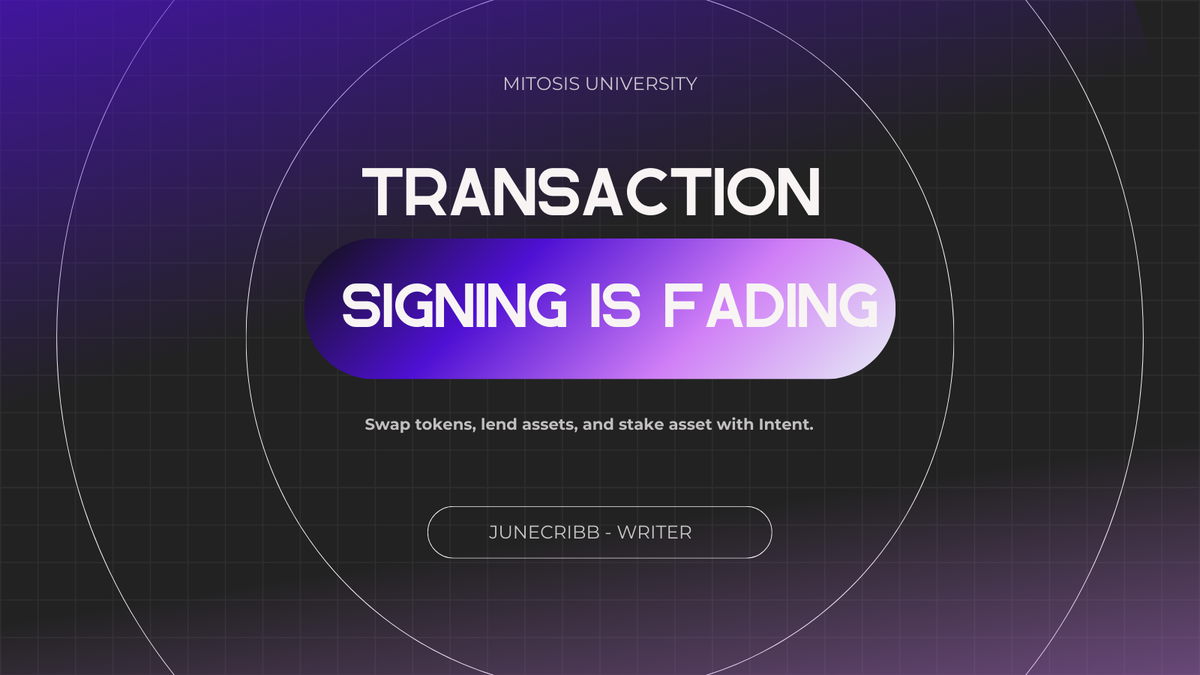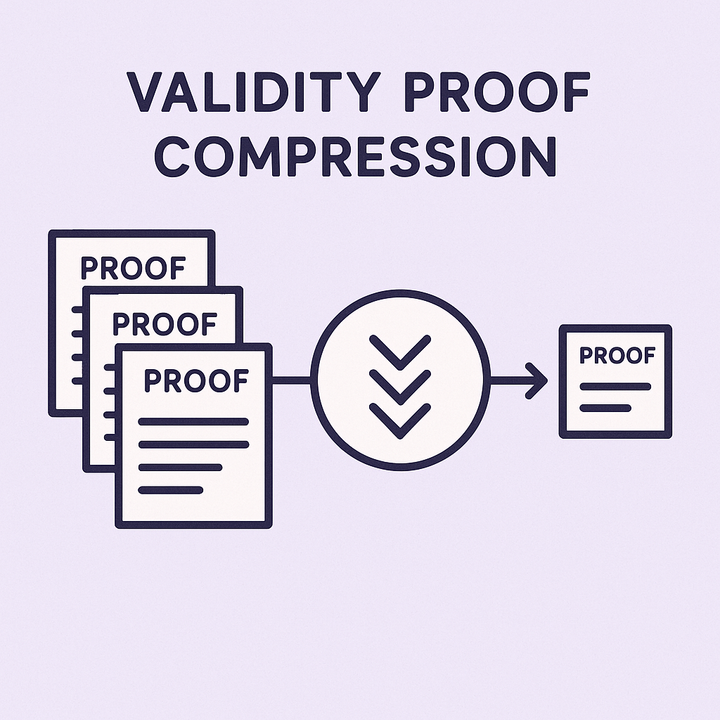Transaction Signing Is Fading Fast.

If you’ve ever used DeFi, whether to swap tokens, lend assets, or stake, you’ve probably gone through this routine:
- Sign a transaction to approve the token.
- Sign again to swap.
- Sign another one to deposit.
That’s how blockchain works today. Every action requires a signed transaction. But this system is starting to show its limits.
As DeFi becomes more advanced and user activity spreads across multiple chains and protocols, the constant signing of transactions becomes a burden, especially for newcomers or anyone trying to automate tasks.
Now, a new way of interacting with blockchains is emerging. It’s called intent-based architecture. Instead of signing every step, you simply state what you want to achieve and let the system figure out how to get it done.
Let’s explore this meta, why it matters, and how projects like Anoma and Essential are building this future.
What’s Wrong With the Current System?
Right now, every blockchain action must be translated into a transaction. That means users need to:
- Know exactly what steps to take.
- Manually sign off on each step.
- Deal with gas fees, slippage, and token approvals.
- Repeat this every time they interact.
This process causes several problems:
1. Friction and Confusion - Every time you want to do something, you have to sign one or more transactions. This slows things down and makes blockchain harder to use.
2. Hard to Automate - Doing complex things, like moving money between chains or auto-compounding yield, requires lots of steps and tools. Most users can’t automate this easily.
3. Security Risks - Sometimes users sign transactions without understanding what they’re doing, especially when interfaces are unclear. This leads to scams or costly mistakes.
4. Overload of Technical Detail - Most people just want results. But in the current system, they need to understand routing paths, gas settings, and contract addresses just to make basic decisions.
What Are Intent-Based Architectures?
Intent-based architecture is changing the whole system.
Instead of signing every step, you describe what you want, like:
- “Swap 100 USDC for ETH at the best rate.”
- “Move my ETH to the best yield farm.”
- “Bridge tokens and stake them in one click.”
This is called your intent.
Once you sign and submit your intent, a network of bots or protocols called solvers will compete to find the best way to fulfill it. The best option is shown to you, you approve it, and the whole process runs automatically.
You control the outcome. But you no longer need to manage all the steps manually.
How This Changes DeFi
- Better User Experience - You interact based on your goal, not the steps. No need to approve every tiny action.
- Fewer Mistakes - Since you only approve the final result—not raw transactions—it’s easier to avoid phishing or scammy approvals.
- Powerful Automation - This model makes it easier to automate actions. For example, you could tell your wallet to reallocate your stablecoins weekly based on the highest yield, without logging in and clicking every time.
- Cross-Chain Simplicity - Instead of figuring out how to bridge assets between chains, your intent can be fulfilled automatically across multiple networks.
Meet the Builders: Anoma and Essential
Two major projects are building systems that make intent-based interaction a reality.
Anoma: A New Blockchain Built for Intents
Anoma is creating an entire blockchain where everything runs on intents. You don’t send traditional transactions. Instead, you post an intent, and solvers match it with others.
Here’s what makes Anoma powerful:
- You can bundle multiple actions into one intent (like swapping and staking in one go).
- It’s private by default, using zero-knowledge proofs to keep your activity hidden from the public.
- It’s designed for complex interactions, even involving multiple people or parties (e.g., two users trading different tokens across chains).
Anoma isn’t just simplifying the interface, it’s rethinking how economic coordination happens on-chain.
Essential: Bringing Intents to Ethereum and Beyond
Essential is focused on adding intent-based execution to existing chains, like Ethereum and Solana. You don’t have to switch blockchains, it works with what we already have.
How it works:
- You declare your intent in a standardized format.
- Smart accounts (using ERC-4337) and solvers handle the work, routing, gas fees, and execution.
- You approve the result, not every step.
Example: You want to move 500 USDC into the best ETH liquidity pool on Arbitrum or Base. Instead of bridging and swapping manually, Essential lets you do this in one step.
Essential brings intent architecture to the wallets and apps you already use.
Intents is Changing Delegation too.
In the old system, you managed everything and just signed transactions.
In the intent-based world:
- You describe your goal
- You define your limits (like max slippage, tokens involved, deadlines)
- You delegate the planning and execution
It’s like telling a travel app, “Get me to Lagos for under $300” and letting it figure out the best route. You still approve the final plan, but you don’t book each leg manually.
In DeFi, this means:
- You could have automated wallets managing your strategy
- DAOs could set group-wide intents for their treasury
- Protocols could run cross-chain intents, without forcing users to know what chain they’re on.
Are There Risks?
Yes, like any new model, intent-based systems come with challenges:
- Trust in Solvers: How do you ensure they fulfill your intent honestly and efficiently?
- Fair Competition: How do we prevent solvers from colluding or front-running?
- Standardization: Intents need to work across different wallets, chains, and protocols.
- Security: Users still need to set clear limits so solvers don’t abuse the delegated power.
Both Anoma and Essential are designing ways to solve these challenges, like using cryptographic proofs, auctions, and intent standards.
Conclusion
Blockchain has come a long way, but asking users to sign every transaction isn’t scalable.
Intent-based architecture offers a smarter, safer way to interact with DeFi:
- It simplifies how users express their goals.
- It automates execution without giving up control.
- It enables advanced, cross-chain interactions with ease.
Protocols like Anoma and Essential are making this future possible. Instead of managing every transaction, we’ll soon be managing outcomes. and letting the system do the rest.
The era of signing every step may be ending. And that could make DeFi work better for everyone.
That's all for Intent and the future of blockchain transactions. Check out other news on mitosis and stay updated.

Comments ()